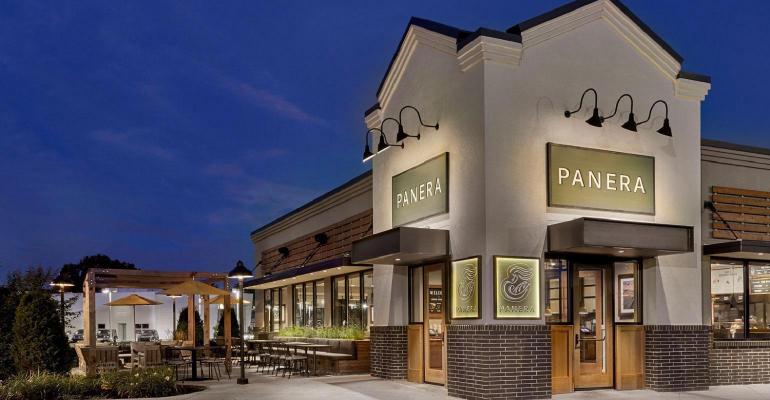Coming off a year of innovation during the pandemic, Panera Bread is looking to go all-in on convenience technology in the future, with ghost kitchens, mobile kitchens, virtual catering, and redesigned drive-thru lanes already in the works, Panera Bread CEO Niren Chaudhary told Nation’s Restaurant News.
“We are excited about creating our vision of the next generation of Panera,” Chaudhary said. “This next generation [of Panera stores] will use 5-6 disruptive ideas to drive greater customer engagement.”
Chaudhary emphasized that he sees the company as an e-commerce brand just as much as a foodservice brand. The future of foodservice, he said, is in “asset-light models” with smaller cafes and seating areas. Panera 2.0 — which will land sometime in the next year — could have a smaller footprint but with double drive-thru lanes, external rapid pickup access counters and designated curbside pickup areas.
“These are the kinds of things we are thinking of recreating and redefining for the Panera of the future, which is going to be more off-premise-oriented, and led by technology and convenience,” he said.
Besides smaller physical footprints, other aspects of Panera 2.0 will include delivery-centric ghost kitchens and mobile kitchens. While Chaudhary would not offer specific details on when those virtual versions of Panera will be tested out, there already appears to be a virtual Panera Bread in Chicago, offered in partnership with Kitchen United.
Panera did provide more details on the company’s up-and-coming virtual catering platform, which is launching on Jan. 18 after it underwent pilot testing in December. Starting Jan. 18, Panera customers with a catering account can set up an online catering order five days before an event during which virtual meeting (or other virtual event) attendees will receive a digital voucher code good only for that specific timeframe. Attendees will then receive their virtual event code and instructions via email the day before the event and then place their order for rapid pickup, delivery, or curbside pickup.
“An online version of catering will look like all of us sitting around a Zoom meeting with our food arriving at the same time,” Chaudhary said. “That is a disruptive way of serving the same needs consumers have in a different way that is more convenient and relevant in a world that looks different.”
The pandemic has changed the way operators should approach convenience technology. Chaudhary said they’re looking at other forms of technology like touchless kiosks where instead of tapping a screen to place their order, customers might use hand gestures instead like giving a thumbs up, for example. This way, they can leverage consumer needs for contactless experiences without sacrificing engagement.
When it comes to delivery, throughout the pandemic Panera has been balancing the ease of third-party services with the money-saving benefits of in-house delivery. The future of delivery might use the best of both worlds.
“A disruptive model is a hybrid of both [third-party and in-house delivery],” Chaudhary said. “We might leverage our existing drivers for orders and every time we need some help, we can outsource it. These are examples in this new world of us being able to innovate, to improve and strengthen our business model.”
Contact Joanna Fantozzi at [email protected]
Follow her on Twitter: @JoannaFantozzi




